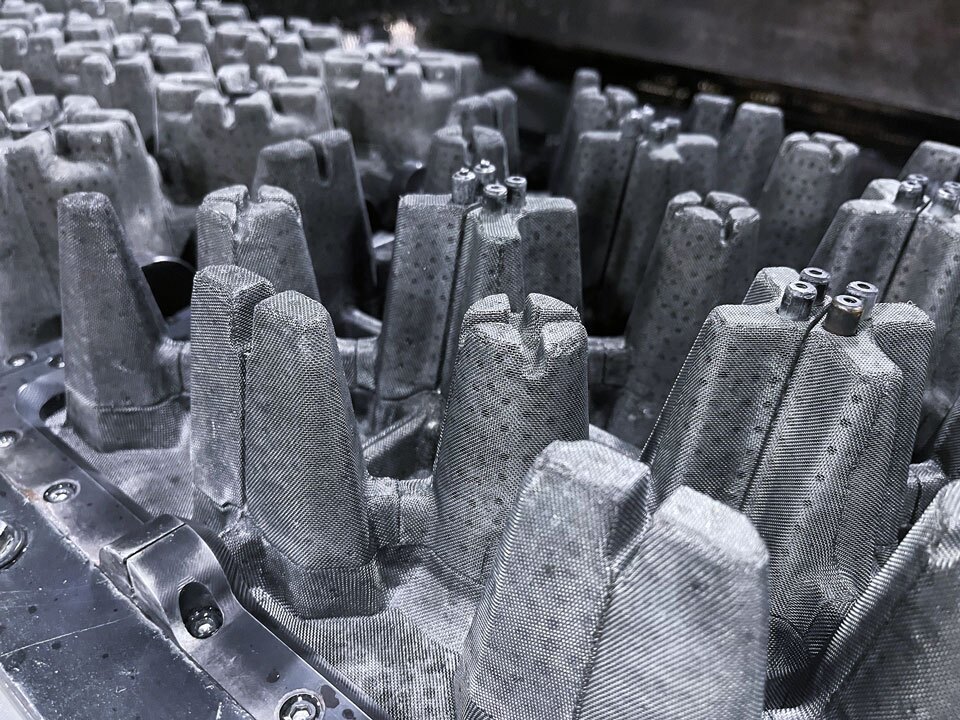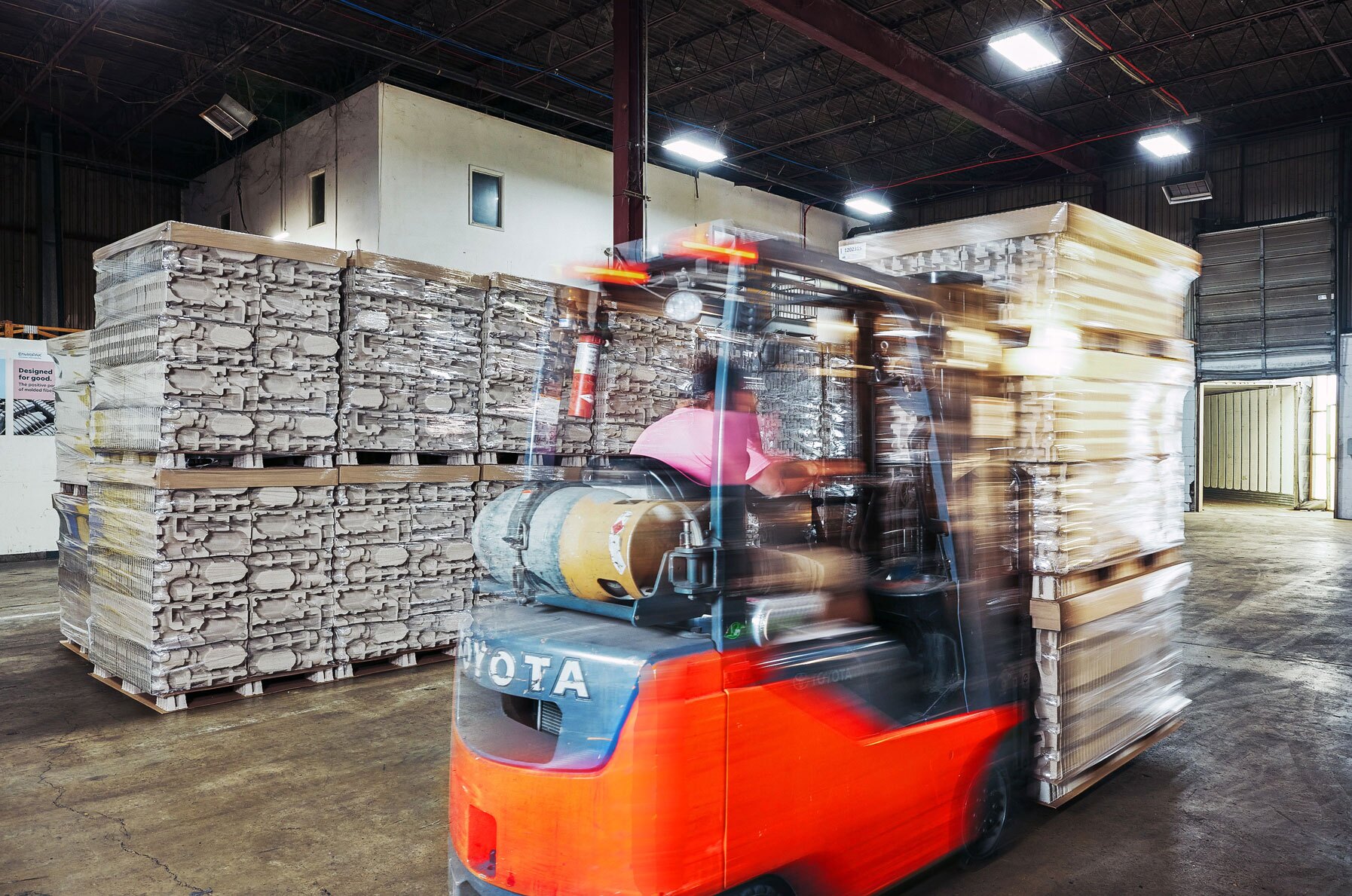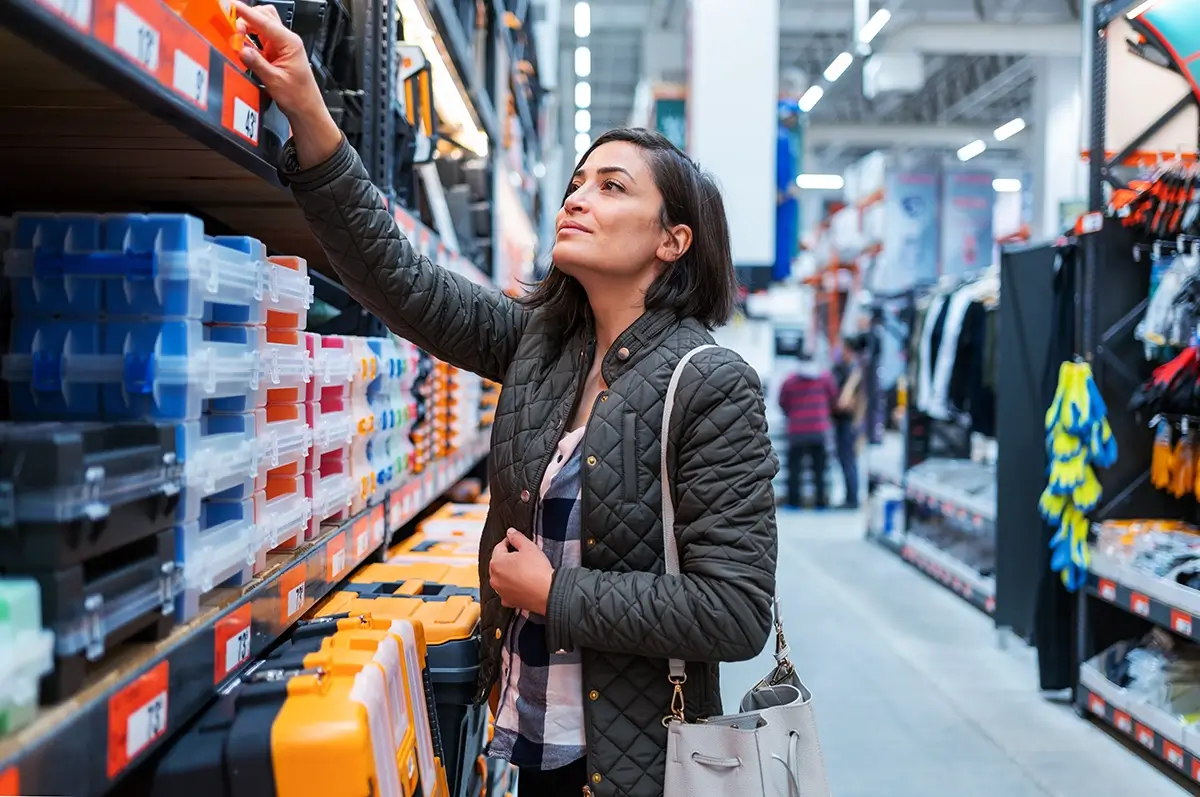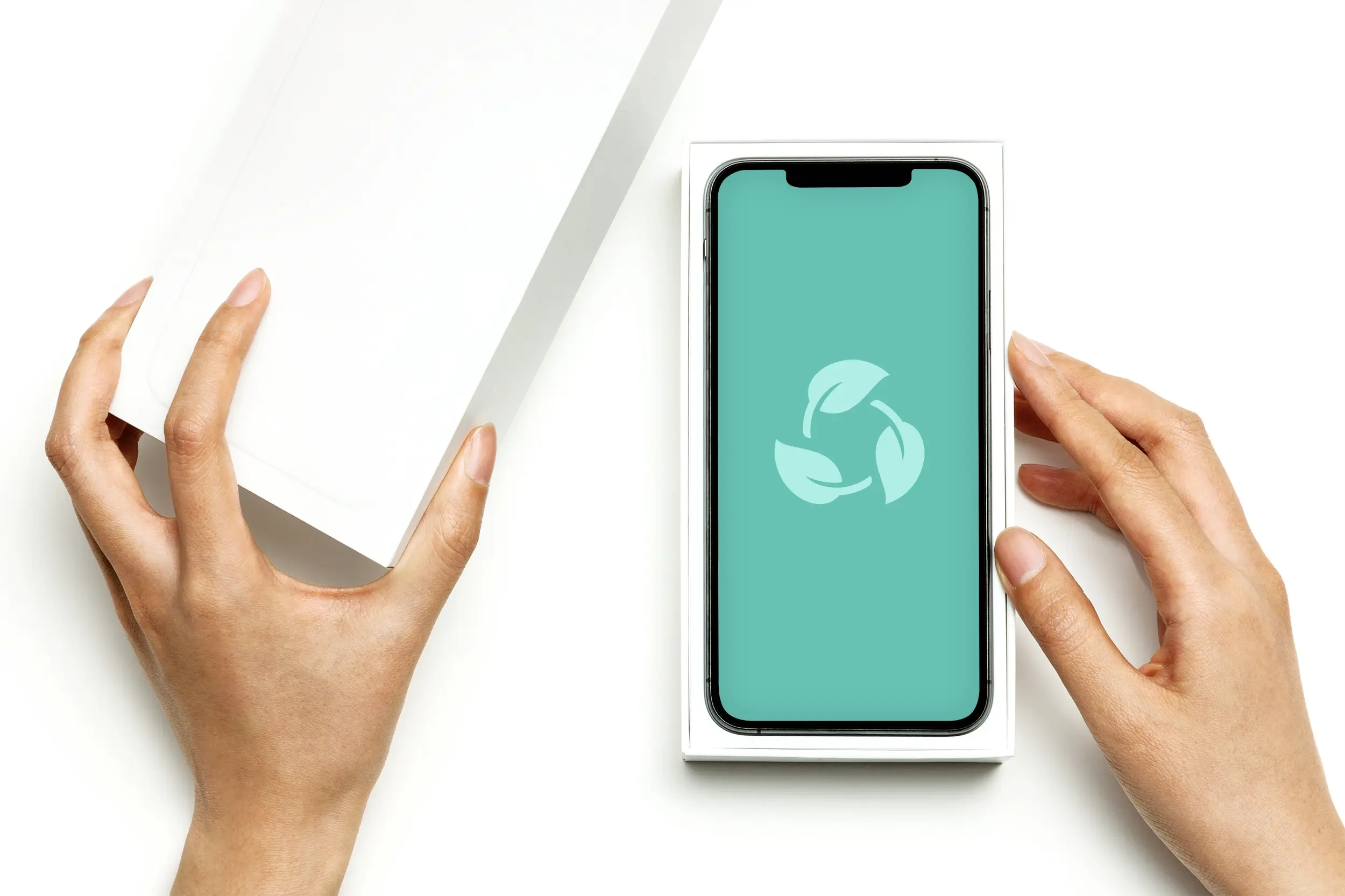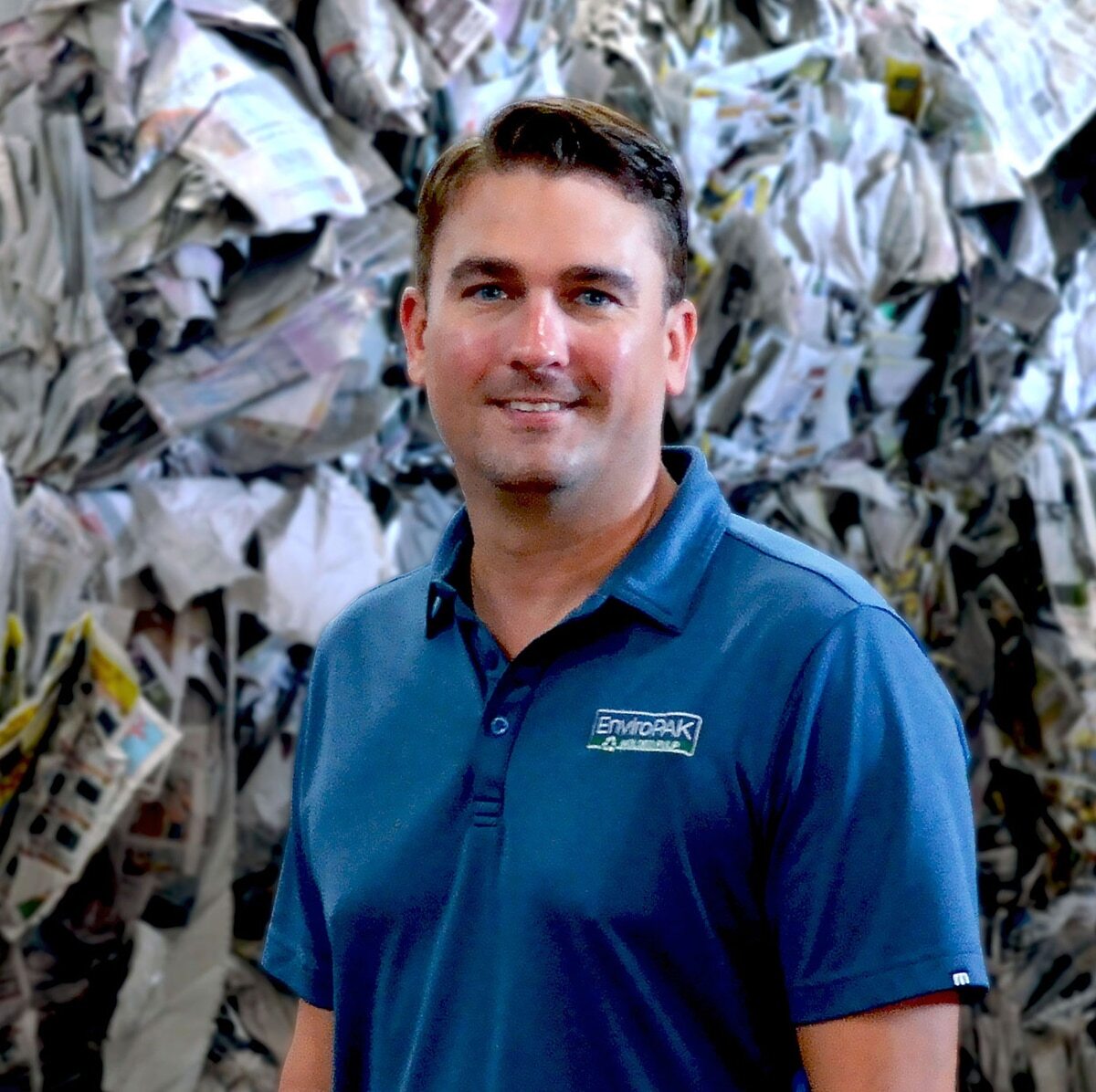Consumer electronics are an integral part of daily life. If you think about it, we might all be lost in today’s modern, instant information-driven world without our smartphones, computers, HDTVs, music systems, printers, scanners & photocopy machines, game consoles, electronic wearables, home security systems, and digital thermostats in our smart homes.
Technology dependence by the numbers:
- 3.6 = Average number of devices and connections per person globally
- 29,214,338,616 = Number of electronic devices used daily worldwide
The numbers are staggering. It leads to the question of what happens to the electronics packaging that is used to protect and provide a brand image for consumers? What is known is that an estimated 5.3 billion of these communication devices are thrown away each year. This alarming estimate of “e-waste” is magnified when you add in packaging materials such as plastic that ends up in landfills.
While consumer demand for electronics is not letting up, green solutions in packaging are becoming just as important in their buying decisions. According to Roundup.org, sustainably marketed products grow 2.7 times faster than non-sustainably marketed products. In addition, Google searches for topics related to sustainable products increased by an estimated 130% between 2017 and 2022.
Electronics brands such as Microsoft are listening to the needs of their eco-conscious consumers in the area of packaging. In fact, they hope to completely remove single-use plastic packaging in their supply chain with materials such as biodegradable and compostable molded fiber as early as 2025 along with many other sustainable packaging objectives by 2030:
Single-use plastic packaging elimination by 2025:
- 100% certified sustainability forested fiber by 2025
- 100% recyclable packaging by 2030
- 100% recycled, renewable or responsibly sourced content by 2030
Replacing plastic waste with eco-friendly materials.
Samsung is a leading consumer electronics brand with products that range from mobile devices and UHD TVs to wireless Dolby speaker systems and even smart washers. The company has also been providing their consumer base with eco-friendly solutions that “lead the way to a more sustainable future. We pursue sustainability throughout the product’s life cycle – from design and development to manufacturing, usage, take-back, and recycling.”
This effort is evident in product materials for the Galaxy S23 series where Samsung has incorporated recycled materials in more device components than in any other previous Galaxy smartphone. In the Galaxy Book3 Ultra, product materials include plastic recycled from discarded fishing nets as well as plastic recycled from discarded water bottles for the rear inner case and cover foot.
What’s more, Samsung has engineered into their home products SmartThings AI Energy Mode. This feature reduces energy consumption of their washers, air conditioners, and dryers by up to 60%, 20%, and 35%, respectively. But Samsung washing machines do a lot more for the environment by also helping to remove microplastics:
“You can reduce microplastic emissions from your laundry with our washing machine’s Less Microfiber™ Cycle, which effectively reduces microplastic shedding by 54% and the Less Microfiber™ Filter which captures approximately 89-98% of microplastics released when washing.”
– Samsung Electronics, 2023 Sustainability Report
It’s good for the environment. And it’s good for business. Bringing innovative, sustainable products to Samsung’s global consumer base has generated revenue totals for the company of almost $195 billion U.S. dollars in 2023.
A positive approach to electronics product packaging.
The consumer electronics packaging market is projected to reach USD 119 billion by 2032, as per a recent study by Global Market Insights. As stated in the same report, increased consumer demand for environmentally friendly materials is a major growth factor in the electronics market.
Samsung was seeing sustainable packaging as part of their future growth plans back in 2019. This was the same year when this electronics giant started taking steps toward replacing plastic packaging materials with paper and other environmentally sustainable elements.
Today, Samsung uses only fiber materials certified by global environmental organizations like the Forest Stewardship Council, Program for the Endorsement of Forest Certification Scheme and the Sustainable Forestry Initiative for packaging and product manuals. By 2025, they are committed to eliminating all plastics in mobile phone packaging and incorporating recycled material in the manufacturing of new mobile products.
“We are committed to recycling resources and minimizing pollution coming from our products. We will adopt more environmentally sustainable materials even if it means an increase in cost.”
– Gyeong-bin Jeon, Head of Samsung Global Customer Satisfaction Center
For Samsung to achieve a circular economy it requires their vendors to have sustainable practices in place, too. Samsung’s supply chain management strategy, according to Procurement Magazine, states that they “work solely with Eco Partner-certified suppliers so that they can assess and manage the environmental impact that may occur in their components, raw materials, and manufacturing processes.”
Less plastic packaging. More brand impact.
Sustainable packaging is one of the key tactics electronics product brands are now deploying to attract customers at the point-of-purchase. The choices on the store shelf can overwhelm and confuse buyers. Packaging design can overcome “sameness” to not only catch the consumers attention, but when that same packaging is sustainable, it can turn buyers into brand ambassadors for the eco-conscious community.
According to a 2024 electronics packaging report in Yahoo Finance, “Electronics companies are increasingly integrating sustainable practices into their packaging designs, recognizing that this can significantly sway consumer choices.” These same electronics brands are also making green initiatives their focus because eco-conscious consumers demand this change.
“[ Sustainable packaging ] not only caters to the eco-conscious buyer, but also positions a brand as a responsible leader in a market that is becoming increasingly sensitive to environmental issues.”
– Yahoo Finance, How Packaging Design Boosts Consumer Electronics Sales, May 2024
In the article “Sustainability in Packaging: Five key levers for significant impact,” Leading research firm McKinsey & Company provides key insights into where packaging is heading.
“Sustainability remains the number-one topic across the packaging value chain, with corporations setting ambitious targets to improve their performance. This is demonstrated by our recent global survey of packaging purchasers across industries, which shows that approximately 75% of organizations have made clear sustainable-packaging commitments.”
– McKinsey & Company
The research also shows that these commitments focus on three areas: full recyclability and a significantly higher degree of recycled content (60% of commitments), a reduction of total usage of plastics (26%), and innovation and the promotion of change in the use of packaging (14%).
McKinsey concludes that sustainability is a strategic issue for the packaging value chain and for many brands it could be a now or never choice.
“With increased consumer awareness and regulations on the rise, there is no time to lose in ensuring that bold commitments can, in fact, be fulfilled. Corporations that delay will face significant uphill struggles, especially with capital increasingly being allocated on the basis of sustainability and performance. By contrast, companies that achieve their sustainability commitments, simultaneously driving cost efficiency and revenue growth, will progress to the next stage of the value creation journey.”
– McKinsey & Company
Packaging: The silent salesperson.
From iPhones to iPads, Apple packaging is known for its minimalistic, clean design – a smart brand strategy symbolizing their revolutionary electronics brilliance. It’s an example of how the right packaging can be a silent salesperson for effectively communicating an electronics brand image on the store shelf.
“From smartphones to smart home devices, the design of packaging can drastically influence the perceived value of the product within. For every $127 a business spends on design, their turnover increases by $286, indicating that effective design is not just an aesthetic choice, but a financial strategy.”
– Yahoo Finance, 2024
Studies also show that boosting electronics sales takes more than an eye appealing packaging design. Consumers are shopping for electronics and electronics packaging that is good for the environment.
“87% of consumer electronics shoppers consider sustainability before purchasing. That percentage jumps to 90% for millennial respondents and 92% for Gen Z respondents.”
– Chain Store Age, 2023
Apple announced last fall that it was “on track to phase out plastic in primary and secondary packaging by 2025.” Also on an aggressive sustainability push is Google, maker of popular electronics such as the Google Pixel 6 phones. They just released their plastic-free packaging design guide for consumer electronics products in hopes of accelerating sustainability efforts for all industries.
Consumers have a voice in packaging. And retailers are listening.
The leading retailer for electronics sales is surprisingly not Amazon. They rank second with 27% of overall sales. Best Buy leads the way with a 31% share of the market share. Another eye-opening statistic is that “in-store” sales account for 63% of all consumer electronics purchases.
Best Buy is closely watching its consumer base and their buying habits as evidenced by their sustainability efforts. One key component of their “doing good for the environment” includes working with their product vendors in the elimination of wasteful “inner packaging packs” that weren’t necessary for proper protection. In 2023 this accounted for 250 products that didn’t require inner packaging. This electronics retailer leader has focused on other green packaging strategies where biodegradable and compostable molded fiber can fit in perfectly:
“With a focus on design, we are concentrating on procuring packaging materials that are recyclable, compostable, or reusable to reduce environmental impact and improve the end-of-life management.”
– Best Buy, 2023, Corporate Sustainability Report
From electronics brands to the retailers where consumers shop for these products, sustainability is giving companies a sales advantage. But it goes beyond revenue generation. Way beyond. Because what’s good for sales is also good for the environment.
Contact EnviroPAK® to learn why custom molded fiber packaging is the positive, sustainable direction for the environment and the electronics your customers demand in 2024 and beyond. Our molded fiber packaging is made from 3,500 tons of recycled paper yearly. And it’s the ideal sustainable, biodegradable, and compostable solution to protect your products and your brand image with consumers.


